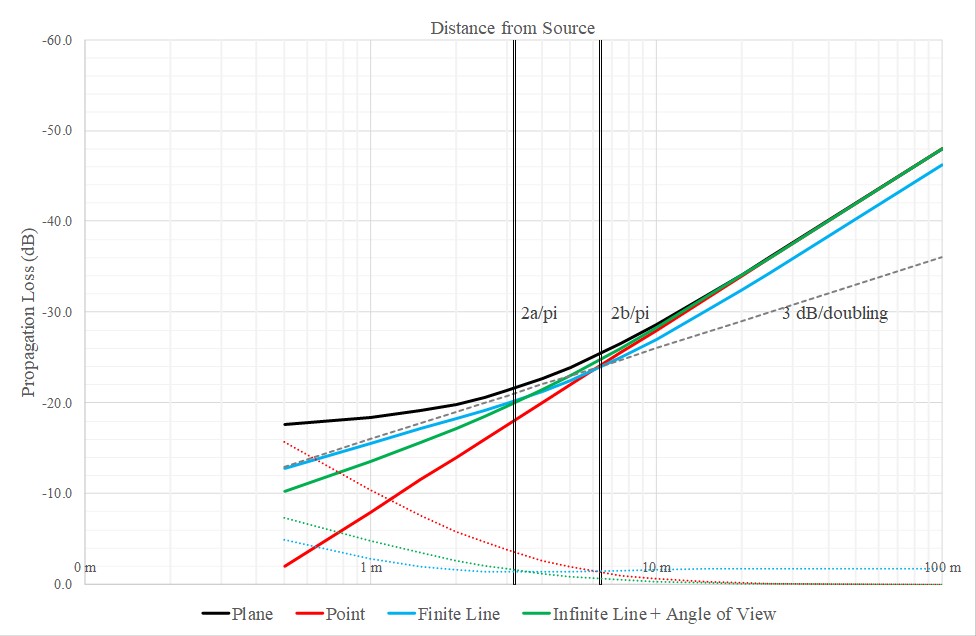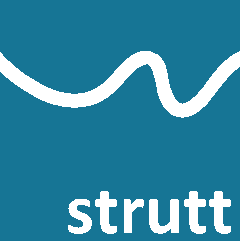

If "b" is the largest dimension of a plane source and "a" is the smallest dimension of a plane source, then "2a/pi" and "2b/pi" are approximations that roughly correspond to the distances at which the plane source radiator starts behaving like a line or point source (respectively). Whether the propagation actually behaves as a line source or point source depends on the aspect ratio of the source shape.
The plane source propagation formula in Strutt uses a continuous function from Bies and Hansen (equ. 5.105 in the 3rd Edition); the "plane/line/point source" information in the Descripton box is purely to guide the user by informing them which region of behaviour it’s in.
As an example, the different propagation factors for a 10 m x 5 m source are presented below. Error between plane source and others are shown as dotted lines.

The source dimensions influence whether you get a defined line source region (and whether the plane and line source values converge). As the minor dimension of the radiator gets bigger relative to the major (i.e. more square) the line source region starts to disappear.
The threshold at which the region is defined as "line source" or "point source" is somewhat arbitrary. Using "2a/pi" and "2b/pi" seems to give good results – within 2 dB of the plane source - and also seems to be fairly consistent with source size change.